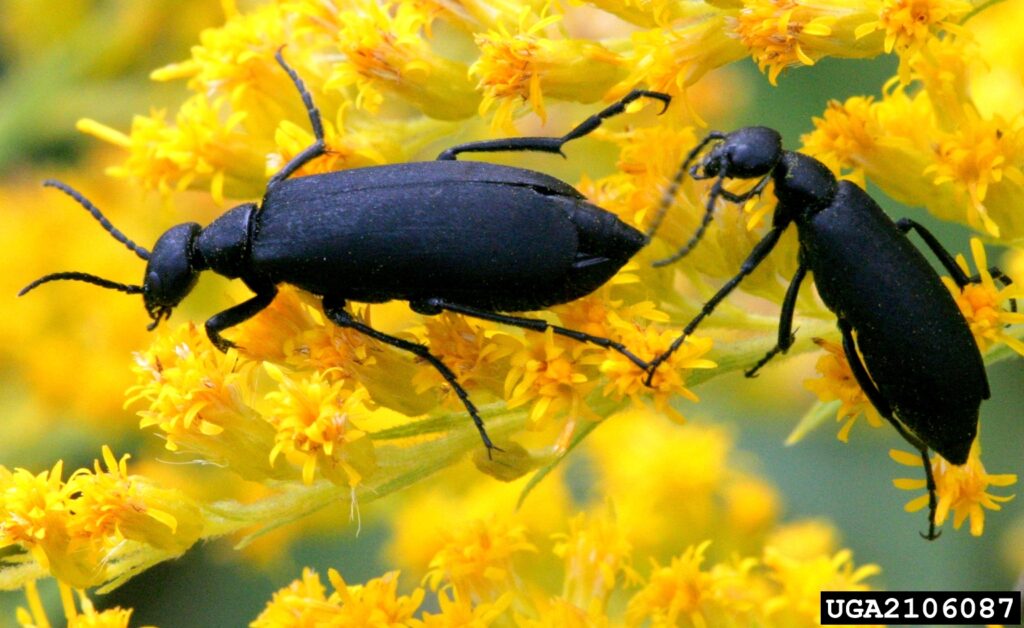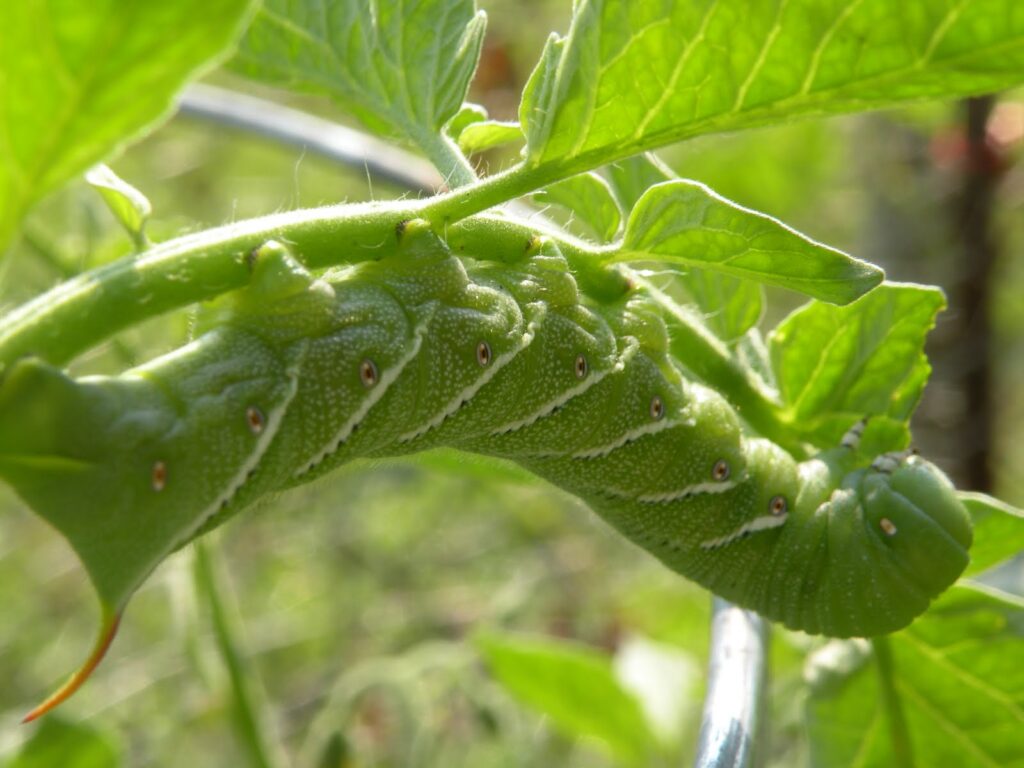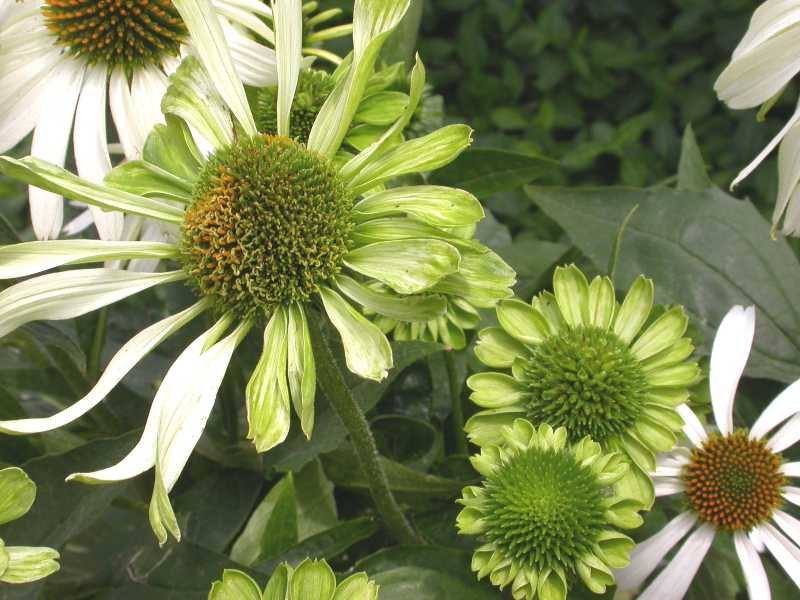
This week in the garden, let’s start with powdery mildew that is starting to affect certain plants like squash vines. It looks like talcum powder sprinkled on the leaves. This fungus can attack most plants, especially lilacs, but rarely does any damage and shrubs or trees. I do use a fungicide like Daconil on my vining vegetable this time of year with another application after any rains to prevent infestations on summer and winter squash.

People in the country have noticed black or dark grey beetles eating certain flowers and vegetables. These are blister beetles usually coming from grazing land or alfalfa fields after being cut. They get their name from a secretion that will cause blisters if crushed or handled. Rarely do they cause much damage.

The insect that will cause damage is the tomato hornworm. You may go out to your tomatoes and find a lot of the leaves that have been eaten. Look closely and you will find a green caterpillar the size of your pinky finger. It is easiest to pick them off the plant. These caterpillars will pupate into the large sphinx moth you see fluttering around now on the flowers.

I have seen hedge balls being sold the last time in Pierre. They are the large non-edible fruit from the Osage orange tree. The wood was made into bows and baseball bats. The tree has been used around orchards as a trained hedge to eat critters away. Now the oil in the seeds is used in cosmetics. People use them for spider control in homes claiming they repel spiders and cockroaches away. SDSU rather busted this myth. While some oils in the fruit can act as a repellant, they had to extract and concentrate those oils to have any benefit. Using a border insecticide long-lasting spray around the home like Home Defense Spray will do much more in repelling insects.

Aster yellows have been showing up in my asters this year. The first time I tried annual asters and ended up with only 50% of a crop. This is a bacteria spread by mainly leaf hoppers. This bacterium can also infect calendula, petunia, zinnia, mum, cosmos, marigold, coneflower, and other flowers. The symptoms are a stunted plant with brown edges on the leaves and odd-looking flowers. The only remedy is to remove the plant immediately to prevent the infection from going to other plants.
Keep deadheading (flower removal) of your flowerbed and containers. This keeps the flowers producing through the heat of summer into fall. I am deadheading calendulas and Mexican sunflowers every other day, fortunately, I planted just of few of these plants. Zinnia, cosmos, and marigold need weekly deadheading.
This is the time to prepare your soil to plant a lawn into. Spray the area with Roundup to kill everything. Rototill and smooth the ground and plant the grass seed. For shady areas buy a grass mix with fine fescue seed.
